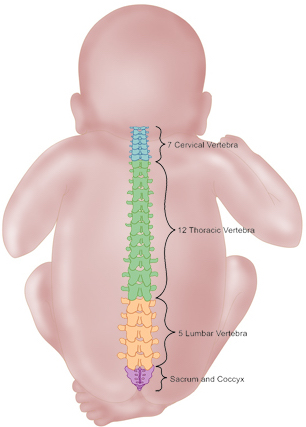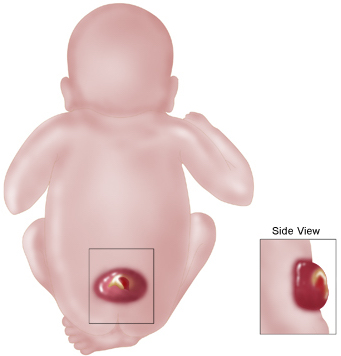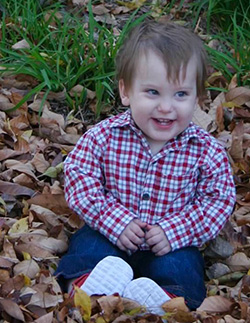Spina bifida is a defect in the development of the spine, resulting in a lack of skin and tissue covering the spinal cord. The neural tube usually closes by the fourth week of pregnancy, but in spina bifida, the neural tube does not close completely, leaving the baby’s delicate spine open to possible injury. A neural tube defect is among the most common and serious of birth defects, and it can occur anywhere along the backbone. The types of spina bifida include:
- Spina bifida occulta: A mild form of spina bifida in which the spinal cord and the surrounding structures remain inside the baby, but the back bones in the lower back area fail to form normally. There may be a hairy patch, dimple or birthmark over the affected area. Other times, there may be no visible abnormalities.
- Meningocele: A moderate form of spina bifida in which a fluid-filled sac is visible outside of the baby’s back. The sac does not contain the spinal cord or nerves.
- Myelomeningocele: A severe form of spina bifida in which the spinal cord and nerves develop outside of the baby’s body and are contained in a fluid-filled sac that is visible outside of the back. These children typically have weakness and loss of sensation below the defect. Problems with bowel and bladder function are also common. A majority of babies with myelomeningocele will also have hydrocephalus, a condition that causes the fluid inside of the head to build up, increasing pressure and expanding the skull bones to a larger than normal size.
Approximately 85% of neural tube defects occur in the lower back area and 15% are located in the back of the neck or upper back areas.







 The first prenatal spina bifida surgery in Wisconsin was completed at Children's Wisconsin in 2014. Joe and Melanie Donnerbauer of Little Chute, Wis. discovered their son, Miles, had a severe form of spina bifida in Melanie's 18th week of pregnancy. Spina bifida is a defect in the closure of the neural tube, often leading to paralysis. The Donnerbauers chose to undergo in utero corrective surgery to repair the spinal defect, which was the first procedure of its kind in the state of Wisconsin. Miles was born six weeks after the surgery.
The first prenatal spina bifida surgery in Wisconsin was completed at Children's Wisconsin in 2014. Joe and Melanie Donnerbauer of Little Chute, Wis. discovered their son, Miles, had a severe form of spina bifida in Melanie's 18th week of pregnancy. Spina bifida is a defect in the closure of the neural tube, often leading to paralysis. The Donnerbauers chose to undergo in utero corrective surgery to repair the spinal defect, which was the first procedure of its kind in the state of Wisconsin. Miles was born six weeks after the surgery.